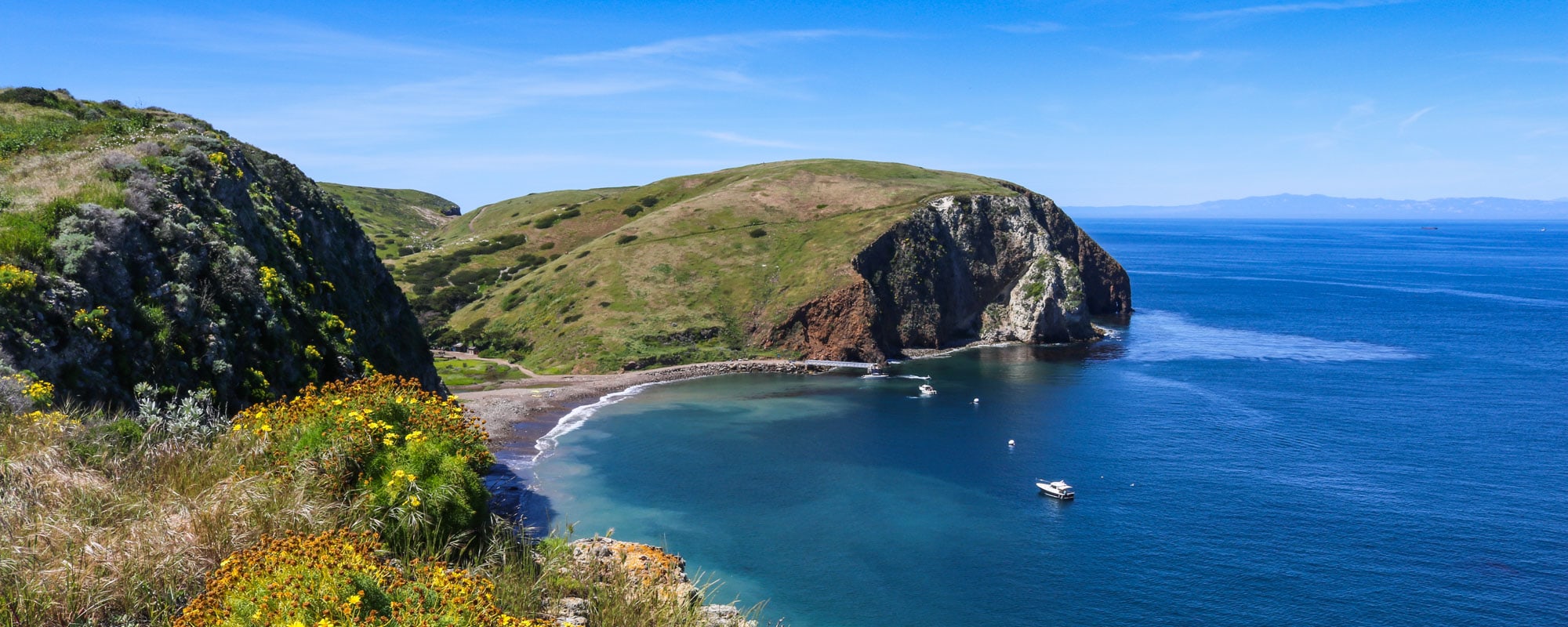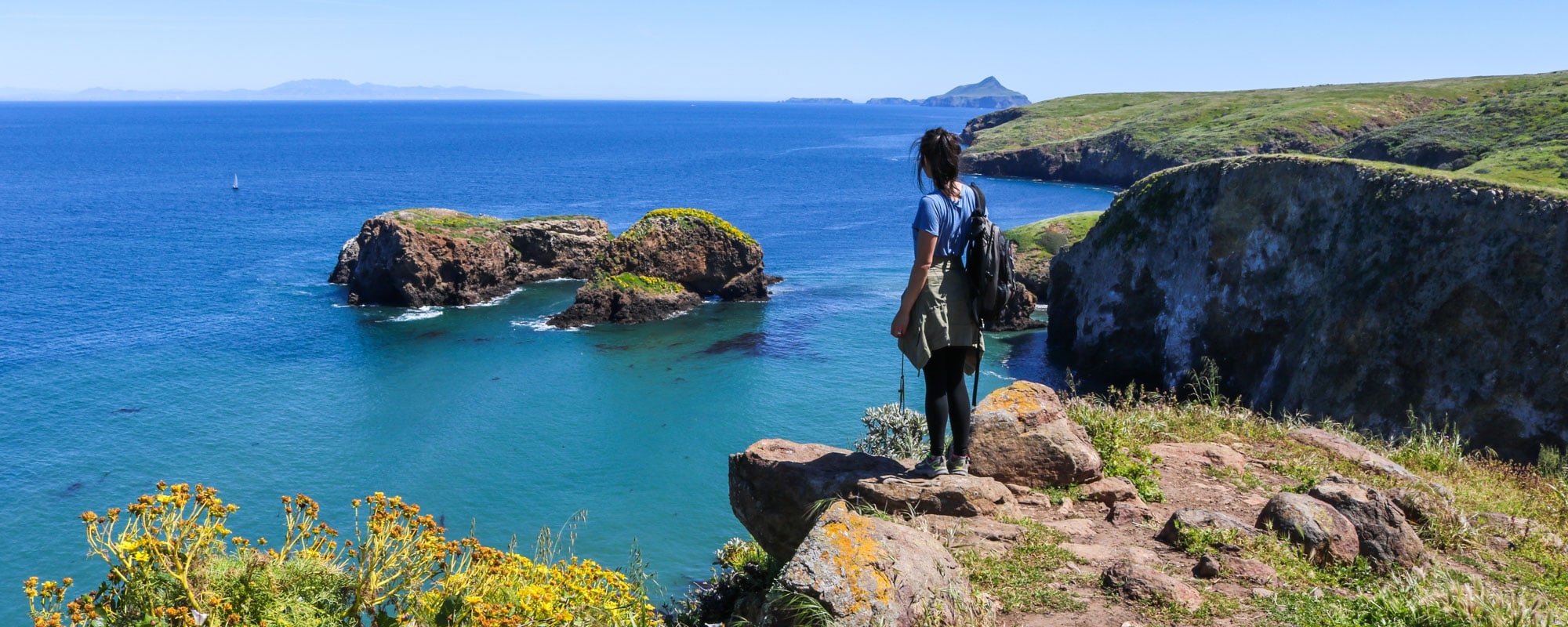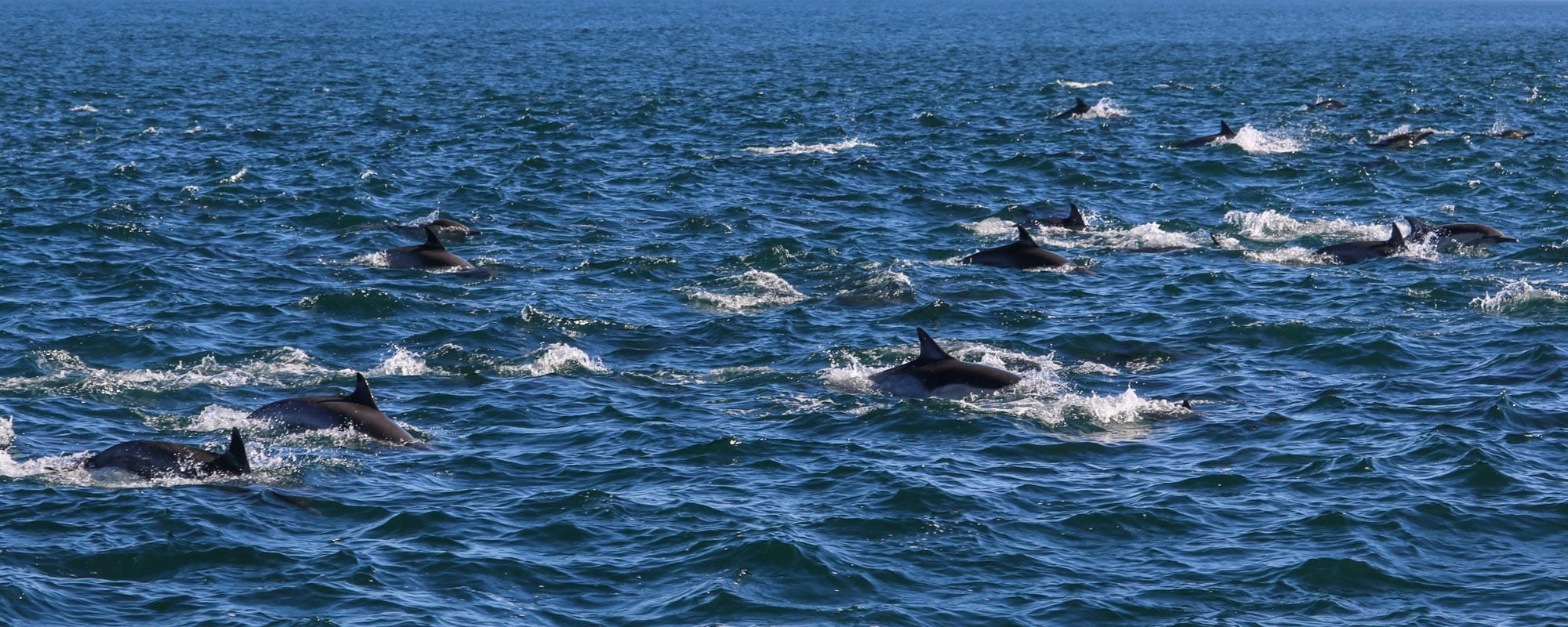Also known as the “Galapagos of North America”, California’s Channel Islands are a biodiversity hotspot, home to seals, whales, sharks, dolphins and unique land animals.

The eight Channel Islands are located between the Southern California mainland and the open Pacific Ocean, in an oceanic region characterized by a remarkably varied topography.
The sea floor around the archipelago consists of sea mounts, underwater plateaus, canyons and vast basins—Santa Cruz Basin, for example, is deeper than the Grand Canyon. Five of the eight Channel Islands are protected as Channel Islands National Park.
The five islands in Channel Islands National Park are Anacapa, Santa Cruz, Santa Rosa, San Miguel and Santa Barbara.
The result of volcanic activity and plate tectonics, none of the islands were ever connected to the mainland. This, in addition to the region’s variety in geological and geographical features, is one of the main reasons for its extraordinary biodiversity—there are over 2,000 animal species on and around the islands.
This is the meeting point of a cold water current coming from the north and a warm current flowing in from the tropics. These currents stir up nutrients from the ocean floor, mixing all sorts of marine flora and fauna in a giant soup of life.
Vast kelp forests surround the islands, providing a refuge and habitat for both the tiniest and the absolute largest animals, from plankton to blue whales. Other high-profile marine animals include seals and sea lions, dolphins, humpback whales and sharks.
On land, too, there’s an amazing variety of life. Much of it is endemic, thanks to the islands’ isolated history. Many mammals made it across the Santa Barbara Channel, eventually evolving into species unique to the islands.
A lot of them, adapting to the difficult conditions on these remote islands, grew smaller. Mammoths became pygmy mammoths while gray foxes evolved to a species not larger than a cat. These now-native island foxes are one of the most iconic—and visible—endemic animals in Channel Islands National Park.

This gorgeous park is only a short boat ride from the two mainland hubs of Santa Barbara and Ventura. Both are home to a visitor center.
The largest visitor center is the one in Ventura, which is also the departing and arrival point of island ferries (see below).
While it’s difficult to really explore all five islands in-depth—unless you have a couple of weeks’ time to dedicate to this park—, the beauty of the Channel Islands is that you can get a sense of what this stunning archipelago is all about by spending a day (and preferably a night as well) on just one of the islands.
This is a place where you can enjoy spectacular coastal scenery, see an abundance of wildlife, and enjoy activities like hiking, surfing and sea kayaking.
This Channel Islands National Park information page contains affiliate links. You can read more about our Terms of Use / Disclosure here.
Highlights of Channel Islands National Park
Video shared from the National Park Service website.
How to Get to Channel Islands National Park
The beauty of this national park not only lies in its actual natural beauty, but also in its accessibility. It may be an archipelago, but the park is only a scenic boat ride away from Ventura, a coastal town just northwest of Los Angeles.
There’s only one company that offers boat trips to and from the Channel Islands: Island Packers. They’re essentially your only option if you don’t have your own boat or want to spend money on a plane ride.
Tickets are affordable and, more importantly, the boat ride offers you a totally different perspective of the islands and the southern California coast.
If you’re lucky, you might even spot some marine animals on the way. On our trip to the islands, we ran into an huge pod of dolphins—literally more than a thousand of them according to the guide—and saw a couple of humpback whales.

Useful Info
Location: Off the coast of Southern California
Nearest Towns: Santa Barbara and Ventura
Area: 389.9 square miles (1,009.9 square kilometers)
Annual Visitors (2019): 409,630
Features: Wildlife, coastal scenery, historic sites
Islands: San Miguel, Santa Rosa, Anacapa, Santa Barbara and Santa Cruz
Popular Activities: Hiking, camping, snorkeling and scuba diving, surfing, sea kayaking
Suggested Stay: 1-2 days
Campgrounds:
- Anacapa Island (7 sites)
- Santa Cruz Island (31 sites)
- Santa Rosa Island (15 sites)
- San Miguel Island (9 sites)
- Santa Barbara Island (10 sites)
More Information: National Park Service
Nearby National Parks:
- Pinnacles National Park, California
- Joshua Tree National Park, California
- Death Valley National Park, California
Other Coastal National Parks:









